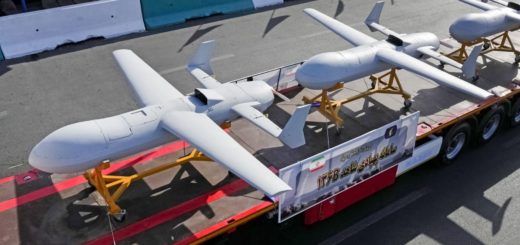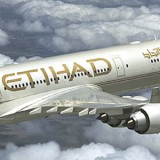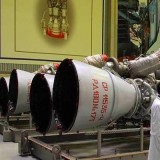UK retires most RAF Tranche 1 Typhoons amid industrial and strategic concerns

The Royal Air Force (RAF) has officially retired the bulk of its Eurofighter Typhoon Tranche 1 fleet as of April 1, 2025. The move, long signaled but repeatedly revised over the years, has reignited debate over the UK’s defense priorities, industrial policy, and long-term airpower strategy.
Of the original 49 Tranche 1 Typhoons, The Times reported that four aircraft would remain in service for Quick Reaction Alert (QRA) missions in the Falkland Islands until 2027, 10 would be stripped for spare parts, 17 disposed of, 12 placed in storage pending disposal, four assigned as ground training aids, and two considered for foreign sale.
A controversial policy journey
Their retirement follows a winding policy journey. Initially slated for retirement in 2019 as part of a 2010 defense review, the jets received a reprieve in 2015 with plans to retain them until 2040. That decision was reversed again in 2021 when the Ministry of Defence announced plans to withdraw the Tranche 1 fleet by 2025. At the time, the aircraft had flown only 42% of their projected service life, averaging 2,544.8 flight hours.
Despite attracting interest from Greece and Ukraine, the RAF Typhoon T1 fleet was not sold on the second-hand market. In December 2023, it was confirmed that the aircraft would undergo a ‘Reduce to Produce’ program to recover usable parts for the remaining Typhoon fleet’s spare parts inventory.
RAF spokesperson Martin Tinworth addressed the retirement in a 2021 statement to AeroTime, defending the move as necessary to concentrate resources on more advanced platforms.
“Retiring the older aircraft means investment can be made in the remaining Tranche 2 and 3 aircraft to ensure we retain a credible, highly-capable Typhoon force,” Tinworth said. “Spiral upgrades, including the integration of the UK-developed Spear Cap 3, will be enhanced by significant investment in Radar 2, providing a leap in operational capability that ensures the Typhoon Force can survive and operate in the most challenging threat scenarios.”
Louis Laisement / AeroTimeEconomic and strategic concerns
Experts have questioned the cost-effectiveness of retiring airframes with substantial service life remaining, arguing that Tranche 1 Typhoons could have been upgraded to remain effective in modern combat roles, even if focused primarily on air-to-air missions.
Designed at the end of the Cold War, Tranche 1 aircraft were built for air superiority and lacked built-in air-to-ground capabilities without external targeting pods. While their limited flexibility compared to newer variants partially explains the RAF’s decision, critics argue targeted upgrades could have improved versatility and extended their service life.
In contrast to the UK’s approach, France continues to operate older Mirage 2000 jets, developed two decades before the Typhoon, and has scrapped none of its Rafale airframes.
Recent French upgrades of Mirage 2000-5 fighters delivered to Ukraine are a compelling precedent. Initially designed for air superiority, these aircraft were adapted for multi-role operations through targeted modifications: they were equipped for air-to-ground missions, received enhanced electronic warfare systems to counter Russian jamming, and were integrated with the SCALP-EG/Storm Shadow cruise missile.
Additionally, the Mirage fighters were armed with MICA air-to-air missiles and AASM Hammer precision-guided bombs, significantly boosting their combat versatility. Critics argue a similar upgrade path could have extended the relevance of Tranche 1 Typhoons at a fraction of the replacement cost.
RELATED
Ukraine’s Mirage 2000 jets intercept Russian missiles in first confirmed use
Long-term strategic implications
While the RAF is now focused on Tranche 2 and Tranche 3 Typhoons, bolstered by new capabilities like Radar 2 and the Spear Cap 3 missile, the long-term implications of retiring Tranche 1 remain uncertain. With defense budgets under pressure and geopolitical tensions rising, the UK faces the challenge of modernizing its air force without eroding its industrial base or sacrificing strategic independence.
At a time when countries like Canada and Portugal openly question their commitments to the US-built F-35 amid strained transatlantic relations, the UK appears poised to deepen its reliance on the program. In addition to the 48 short takeoff and vertical landing (STOVL) F-35B jets already ordered for the RAF and Royal Navy Fleet Air Arm, London is reportedly considering the purchase of up to 100 conventional takeoff F-35A variants.
Sharon Graham, General Secretary of the Unite union, which holds significant influence within Britain’s defense industry, warned in a letter seen by The Telegraph that a complete shift from British-built Typhoons to US-made F-35s for future orders risks hollowing out the UK’s defense industry.
“We’re watching the systematic erosion of the UK’s sovereign defense capabilities,” Graham said. “Thousands of jobs, critical skills, and our national autonomy are on the line.”
Military sources speaking to The Times cited the F-35A’s certification to carry the US B61 nuclear bomb – a relevant feature within NATO’s Nuclear Sharing arrangement – as a key argument. Although the UK is not part of this agreement and voluntarily retired its airborne nuclear strike capability years ago, regaining such a role may be viewed as strategic insurance.
The Typhoon was once considered for this mission, notably by Germany, but the certification process was deemed too slow to replace the retiring Tornado fleet in a timely manner, leaving the F-35A as the only practical option. Coincidentally, or perhaps not, all NATO countries participating in nuclear sharing have opted to purchase the F-35A. The post UK retires most RAF Tranche 1 Typhoons amid industrial and strategic concerns appeared first on AeroTime.
The Royal Air Force (RAF) has officially retired the bulk of its Eurofighter Typhoon Tranche 1 fleet as…
The post UK retires most RAF Tranche 1 Typhoons amid industrial and strategic concerns appeared first on AeroTime.





